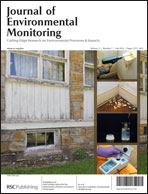The objective in the first phase of this study was to screen four plant species (alfalfa, ryegrass, tall fescue and rice) for phytoremediation of aged polychlorinated biphenyl (PCB)-contaminated soil from an electronic and electric waste (e-waste) recycling site. Glucose, biphenyl and three surfactants (TritonX-100, randomly methylated-β-cyclodextrins and β-cyclodextrin) were used to enhance the phytoremediation process. During the second phase, the focus was rhizosphere characteristics and plant uptake to investigate the mechanism of PCB removal from soil. In the first phase, all the tested plant species showed a significantly greater PCB removal percentage compared to the unplanted controls, while different amendments showed no significant difference. The most effective plant (ryegrass) combined with β-cyclodextrin was selected for further studies. During the rhizosphere characteristics and plant uptake study, the highest PCB removal percentage (38.1%) was observed in the ryegrass planted soil when β-cyclodextrin was amended at 1.0% (w/w). The presence of plants significantly increased the biological activity (microbial counts and enzyme activity) of both β-cyclodextrin amended and non-amended soils. Higher levels of PCB removal were closely related to greater microbial counts and soil enzyme activities by correlation analysis. After 120 days of plant growth, ryegrass accumulated 708.7–820.1 ng PCBs/g in the root and 71.7–110.8 ng PCBs/g in the shoot, resulting in about 0.08% PCBs removal from soil. It was concluded that high PCB degradation was due to the increased PCB bioavailability as well as biostimulation of microbial communities after plantation and β-cyclodextrin addition. Furthermore, results suggested that PCB removal was mainly contributed by microbial degradation rather than plant uptake or abiotic dissipation.

You have access to this article
 Please wait while we load your content...
Something went wrong. Try again?
Please wait while we load your content...
Something went wrong. Try again?


 Please wait while we load your content...
Please wait while we load your content...